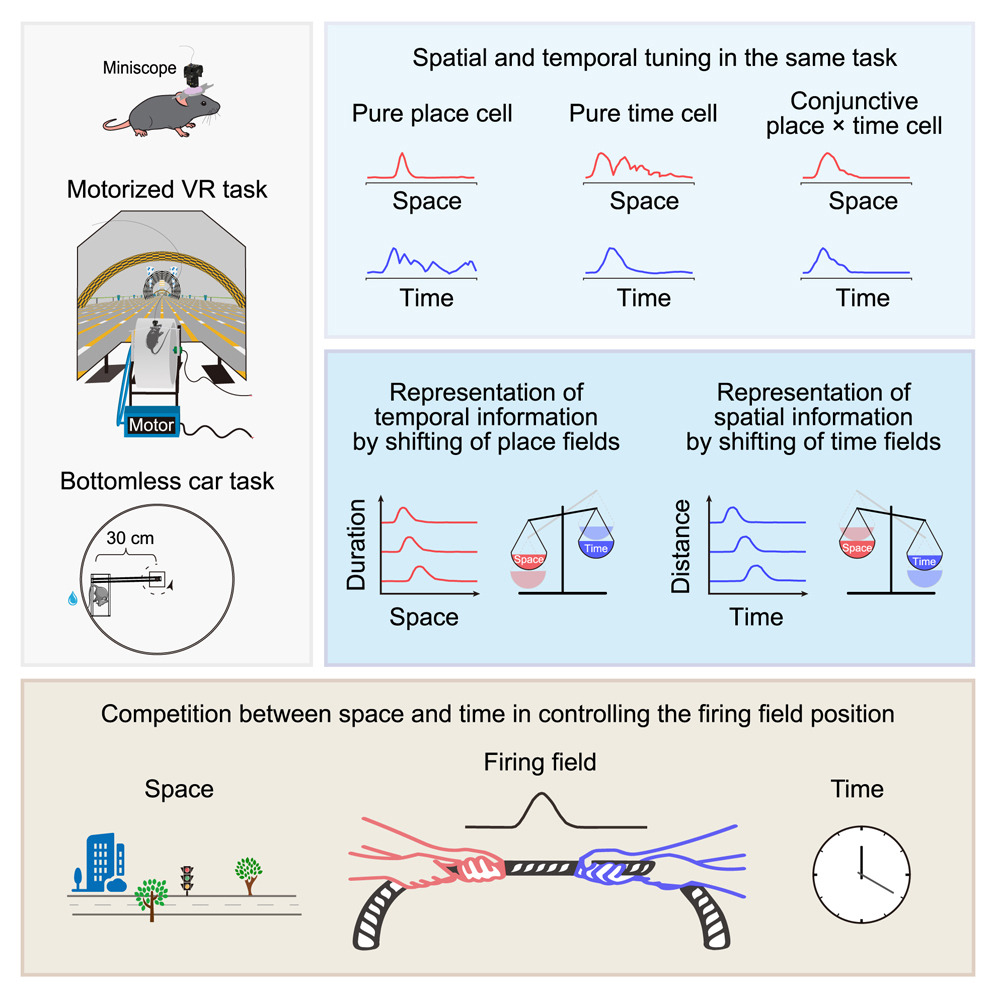Researchers Reveal Competition-integration Mechanism of Space-time Encoding in Hippocampal Neurons
Date:13-09-2024 | 【Print】 【close】
Recently, a collaborative research team led by Prof. WANG Cheng from the Shenzhen Institute of Advanced Technology (SIAT) of the Chinese Academy of Sciences, and assistant Prof. CHEN Xiaojing from the Southern University of Science and Technology, has reported acompetition-integration mechanism of space-time encoding in individual hippocampal neurons, providing an essential neural basis for understanding episodic memory representation within spatiotemporal contexts.
The study was published in Neuron on Sep.5.
The hippocampus is a critical brain region for episodic memory, playing an important role in both spatial and temporal cognition. Previous studies have identified the presence of place cells and time cells in the hippocampus, which represent an organism's location in the environment and specific moments within a particular time interval. These cells may provide the neural basis for the spatial and temporal context signals in episodic memory.
However, the mechanisms underlying the interaction between space and time representation in the hippocampal memory system remain unclear.
To address this issue, the researchers designed various virtual reality and real-world navigation tasks, and used in vivo single-photon microscopy to record and study the spatiotemporal representations of hippocampal CA1 neurons in mice under different movement speeds.
The study found that many neurons in the hippocampal CA1 region exhibit a shared representation of spatial and temporal information, whether in pure spatial navigation tasks (motion over a fixed distance without explicit temporal cues) or pure time perception tasks (motion over a fixed time period without spatial visual input). That is to say, in the same task phase, these neurons functioned both as place cells and time cells.
Additionally, the temporal representations by CA1 cells could capture the temporal regularity of the task, which may facilitate transfer learning. These results provide a unified processing mechanism for place and time cells, and are consistent with theories that organize episodic memories based on a hippocampal spatiotemporal framework.
Furthermore, researchers found that in certain place cells, the preferred spatial location was negatively correlated with elapsed time, meaning that the place field shifted backward over shorter time periods. Similarly, in some time cells, a negative correlation also existed between the preferred time and traveled distance. This competitive negative correlation significantly enhanced the informational content of the secondary dimension.
“Ourfindings elucidate the competitive-integration mechanism between spatial and temporal coding, consistent with the multiplexing of cognitive variables across different brain regions” said Prof. WANG, “this may better serve episodic memory by providing a more refined representation of spatiotemporal trajectories or contexts”.

Interaction between the perception of space and time (Image by SIAT)
Media Contact: LU Qun
Email: qun.lu@siat.ac.cn
Download the attachment:
Integration and competition between space and time in the hippocampus